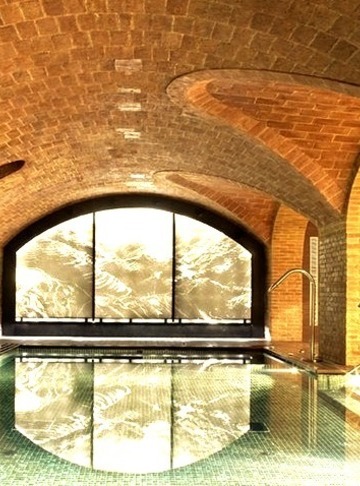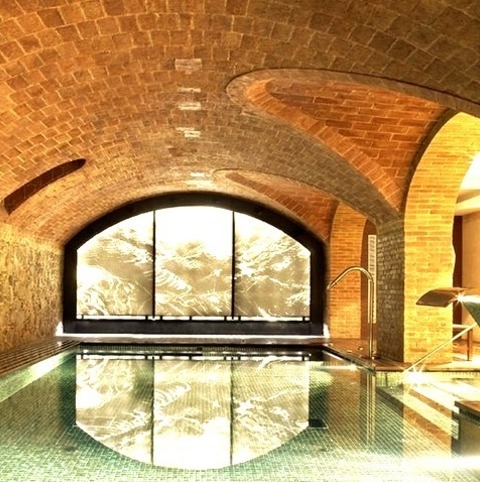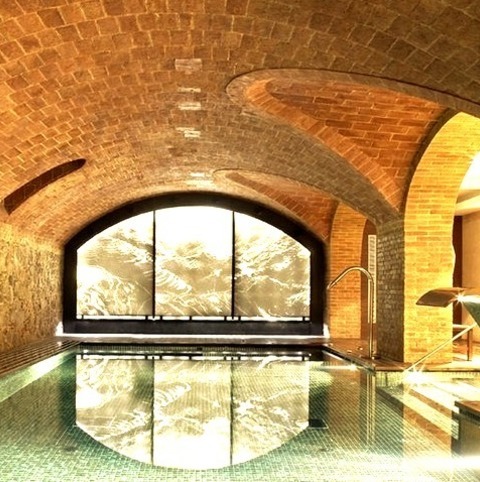#Hotel 1898
Photo
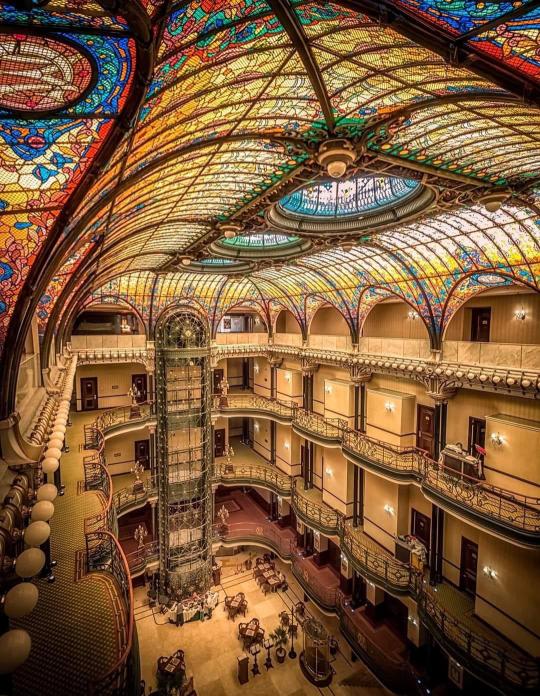
519 notes
·
View notes
Text
So Viv mentioned way back when that Alastor is "probably in his late thirties/maybe very early forties" (source). If he did die in 1933,
Feel free to reblog/discuss, I'm super curious about what your thoughts are.
#imo i kinda like 1898. i like the sound of it#otherwise i think i'd go with '95 or '96#hazbin hotel#hazbin hotel alastor#hazbin alastor#alastor
35 notes
·
View notes
Photo

1898 menu for Falmouth Hotel http://menus.nypl.org/menus/25150
0 notes
Photo

The Palmer House Brownie - Desserts - Brownie
#Bake yourself back in time to the Palmer House Hotel in 1898#when the first-ever brownie was documented. The rest is fudgy#chocolaty#ultra gooey history. existence#history#hotel#stick test#brownies
0 notes
Text
The Worng Action masterlist

Vox x Reader / Alastor's sibling
A vox x reader story, the reader can be what ever gender they want am trying my best to leave it as gender neutral as possible for everyone.
Warrings - swearing, cannibalism, blood, cigarettes and mentions of blood and cannibalism
Hazbin Masterlist
5/??
Chapter's
Part 1 - Your brother shown up after 7 years olny to ask you to help at the hotel and a message for the TV.
Part 2 - Going out for a walk what happens when someone shows up and ruins your day?
Part 3 - Making a meal for everyone, having a talk with the older deer, what next a TV appears?
Part 4 - The day of the meeting with Vox could this fix your friendship or make it worse then it is already?
Part 5 - having Dinner with Vox old memories come up how will the night end?
Part 6 - Posting on the 10th of March
Bonus Chapter's;
.
Story Information;
Y/n - Age of death 28, Year of death 1931. Year born 1903. Cause of death drowning.
Alastor - Age of death 35, Year of death 1933. Year born 1898. Cause of death shot by a deer hunter.
Vox - Age of death 42, Year of death 1950. Year born 1908. Cause of death ??.
So I just kinda mix some stuff up for these to what I felt like was for best
If you want to be added to the taglist just leave a comment, sorry for the @ i thought it would be easier to put it here so I can copy and paste it.
Taglist;
@hxzbinwrites @22carolina08 @queenlibra134 @decaf-nosebleed @n3tb0t @cyariika @lem0n-eater @kenny-619 @rl800 @pro-crastinator14 @cariexoxoo @rolly-polly-molly @edgyboi10000 @ghostdoodlen @starstarbinks @zamadness @morty-witch @fatherlesschild2 @kintsugi-akane @dickmastersworld @montis-posts
#hazbin hotel vox x reader#hazbin hotel vox#vox#hazbin vox x reader#vox x reader#hazbin hotel x reader#hazbin hotel#x reader#reader#alastor x sibling reader#alastor x sister reader#alastor x reader#hazbin alastor#alastor#alastor x brother reader
191 notes
·
View notes
Text
A Letter From Mark Twain to Nikola Tesla
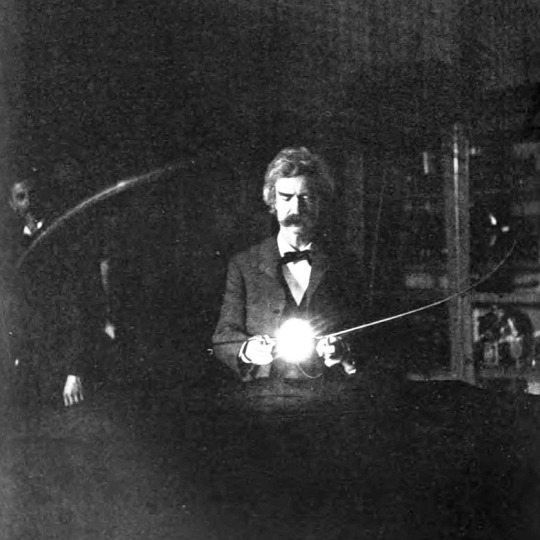
On November 8, 1898, Nikola Tesla made a public announcement of his wirelessly-controlled boat the same day his U.S. Patent was granted to him. Wireless was still very much in its infancy, so the announcement was beyond the comprehension of the layperson. Tesla described his invention as having many uses, including wirelessly controlled boats, vehicles, or aerial devices of any suitable kind to be used as life dispatch, or for carrying letters, packages, or other provisions. It could also make it easier to establish communication with inaccessible regions and explore such regions in the same, and for many other scientific, engineering, or commercial purposes. But the greatest value of his invention was its possible use in warfare for, for his own reason, it had certain and unlimited destructiveness. He could load a boat with explosives and direct it toward any enemy, and by the sheer destructive effect, he would force the opposition in retreat.
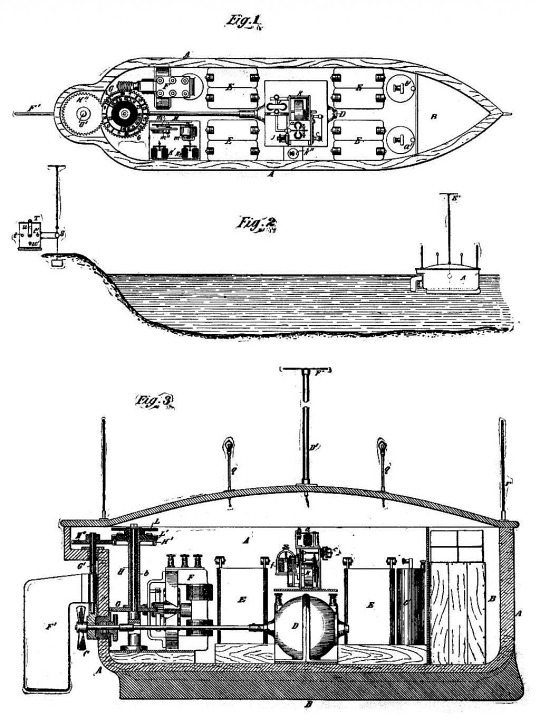
On November 17, 1898, Samuel Clemens, aka Mark Twain, wrote a letter to Tesla regarding his wireless-controlled boat:
Dear Mr. Tesla
Have you Austrian & English patents on that destructive terror which you have been inventing?—& if so, won't you set a price upon them & commission me to sell them? I know cabinet ministers of both countries—& of Germany, too; likewise William II.
I shall be in Europe a year, yet.
Here in the hotel the other night when some interested men were discussing means to persuade the nations to join with the Czar & disarm, I advised them to seek something more sure than disarmament by perishable paper invite the great inventors to contrive something against which fleets and armies would be helpless & thus make war thenceforth impossible. I did not suspect that you were already attending to that, & getting ready to introduce into the earth permanent peace & disarmament in a practical & mandatory way.
I know you are a very busy man, but will you steal time to drop me a line?
Sincerely yours,
Mark Twain
#nikola tesla#science#history#remote control#radio#technology#mark twain#Samuel Clemens#quotes#ahead of his time#ahead of our time
142 notes
·
View notes
Text


Archduchess Marie Valerie's journal entry on the death of her mother Empress Elisabeth of Austria, in 1898 (written on 21 September):
10 September. In the evening at 7.30 o'clock I returned with Maria from a tour of our poor… souper… then went with the three grown-ups to the chapel for evening prayer. Maria came with me, I did not pay much attention to her, did not notice her disturbed expression. I was no more devout than usual… Coming out into the corridor, while the children ran into their room, Maria asked me to come into my writing room, she had something to tell me. I was still thinking only of a small house cross, but when I looked at her, my heart stood still.
“The Archduke?” “No — Her Majesty.”
I don't know whether I asked further questions or whether I immediately said the word “dead”? whether she told me right there in the corridor or already in the room: “Murdered by an Italian anarchist — in the hotel in Geneva.” I don't know. My hand still trembles when I think back to that hour…
Remorse for having returned her great love so badly, and above all… more and more the unspeakable pity for him, the poor, old, sorrowful and grief-stricken father, and the probably also futile question of whether it was not too much for a poor human heart? We were on our knees, Maria and I — in the room and in the chapel. Then I sent a telegram to Franz [Archduke of Austria, Valerie's husband]. And to Papa [Emperor Franz Josef I], “I'll come to you tomorrow morning at half past six.” He himself had telegraphed to Maria that she should “teach me in a good way”.
I went in to see the children. Ella [Elisabeth, Valerie's eldest child] was not quite in bed yet … When I kissed and shook her, hardly knowing what I was doing, telling her softly: “She knows, that dear Grandmama has died,” she began to cry softly, as if she understood. God bless the good child! The boys were already in bed. Hedwig [Valerie's second daughter] was already asleep.
From one room to the other and with Maria out into the quiet starry night. — I lay down too, but sleep was out of the question. At half past one we drove away, Maria and I … arrived in Penzing at half past six in the morning. How the morning dawned over the Vienna Woods, which she loved so much, and how unspeakable fear shook me before seeing Papa again, those are hours that one is amazed to have survived.
Papa stood at the foot of the big staircase at Schönbrunn and we fell into each other's arms. That was the first time he was able to cry, he told me later. But he was still stunned then, and soon afterwards he was calm again, as he had been after Rudolf's death. We went to Sunday mass together, and then I was allowed to spend that first day with him almost without interruption, sitting next to his desk while he worked as usual, reading with him the more detailed news coming from Geneva, helping him to receive the condolence visits of the family members… Prime Minister Thun, who cried like a child — a good feeling that Papa has such servants around him. The unfortunate person who had to bring Papa the first message from Vienna to Schönbrunn was Adjutant General Count Paar with the still undetermined telegram from Irma Sztáray [Empress Elisabeth's lady-in-waiting]; “Her Majesty the Empress seriously wounded”, which was very soon followed by the second: “Her Majesty the Empress just died at 2 o'clock in the Hotel Beaurivage.”
Papa seems to have immediately thought of an assassination, although he repeatedly said: “How can one assassinate a woman who has never harmed anyone?” Papa's intention to leave for Geneva immediately was thwarted by the second telegram.
(Translation by DeepL, keep in mind that in a machine translation a lot of nuances may/did got lost)
#i can't find who maria is - but probably someone from valerie's household#archduchess marie valerie of austria#empress elisabeth of austria#franz josef i of austria#elisabeth franziska of austria countess of waldburg-zeil-hohenems#on this day in history
122 notes
·
View notes
Text
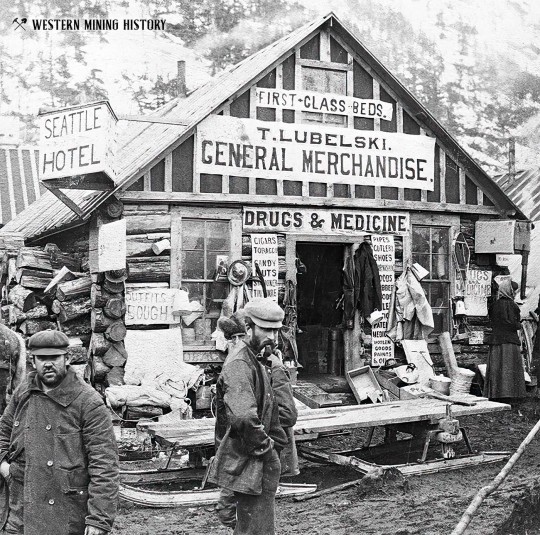
Seattle Hotel and T. Lubelski general merchandise store at Dawson City, Yukon Territory Canada 1898. - source Western Mining History.
35 notes
·
View notes
Text



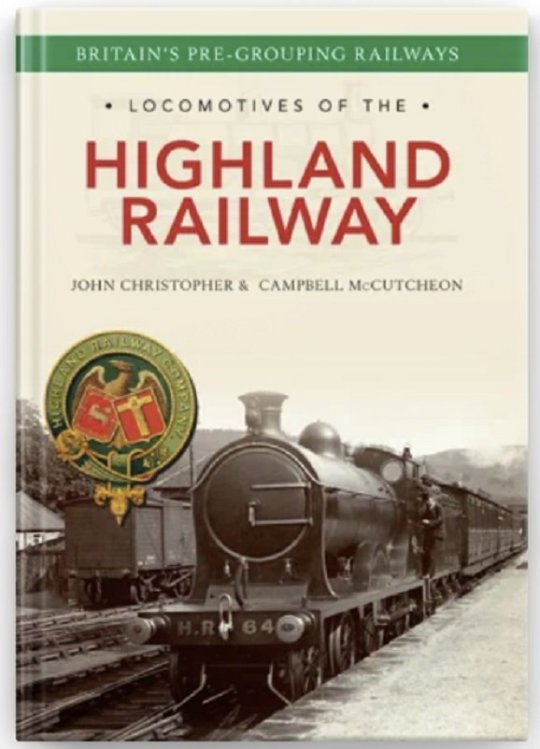

On February 1st 1865 the Highland Railway was formed from the amalgamation of Inverness and Perth Junction and the Inverness and Aberdeen Junction Railways.
Back in the day every region had it’s own local railway company covering the different areas around the country. The Highland Railway ran from Perth in Central Scotland north to Inverness and then on up the east coast to Wick and Thurso. From Dingwall, the railway ran west to Kyle of Lochalsh to serve Skye and the Western Isles. From Inverness, another line ran east to Keith, where it connected with the line to Aberdeen. Several branches were built from this core network to serve nearby towns.
This is a longer post than I normally put together but hope you get an idea of how all these wee companies ran, and ended up becoming the one company, before of course the bigger companies ate them all up. Some of the stations are now gone, but others mentioned, like Kingussie, Nairn, Keith and Dunkeld survive to this day, and I often pass through them on my travels north. It also gives us an insight intothe infamous Beeching cuts in the 60’s which butchered the rail network, if Beeching had his way there would be no railways beyond Inverness!!
Inverness was always the centre of the Highland Railway. It was the company’s headquarters and principle station. All trains led to Inverness.
The original proposals to construct railways to Inverness were made in the mid-1840s. Rival routes were proposed from Perth and Aberdeen . The Perth & Inverness Railway was considered too hilly for the locomotives of the day, but the Great North of Scotland Railway (GNSR) from Aberdeen was authorised. The GNSR struggled to raise capital in the post-railway mania period and eventually started construction as far as Huntly in 1852, opening that line in 1854.
The people of Inverness then stepped in and started building their own line from the Inverness end, initially as far as Nairn, the Inverness & Nairn Railway (I&N) was opened on 6th. November 1855 but by then plans were being made to extend this railway to meet the GNSR. After some discussion, the Inverness & Aberdeen Junction Railway (I&AJ) was promoted to build the line from Nairn to Keith where it met the GNSR extension from Huntly. The I&AJ was completed on 18th. August 1858,when it took over the working of the I&N.
The people of Inverness were never satisfied with the long journey round via Aberdeen , especially as the GNSR’s station was half a mile from that of the line from the south and connections were not always maintained. Thus was born the Inverness and Perth Junction Railway (I&PJR) which ran from Forres via Grantown, Kingussie and Drumochter summit to Dunkeld where it met with end on with the Perth and Dunkeld Railway which had opened in 1856. The I&P was authorised in 1861 and opened just two years later, being worked from the outset by the I&AJR. The two companies amalgamated on 1st. February 1865 to form the Highland Railway.
Meanwhile construction northwards from Inverness had already started, with a line to Dingwall (1862), Invergordon (1863), Bonar Bridge (1864), Golspie (1868), Helmsdale (1871) and Wick and Thurso (1874). Westward from Dingwall, the Dingwall & Skye Railway was opened to Strome Ferry in 1870.
In the 1890s, two additions were made to the main network. The direct line from Aviemore over Slochd to Inverness was completed in 1898, a year after the Skye line was extended to the present terminus at Kyle of Lochalsh. Several branches were opened from these main lines over the next 40 years, taking the final length of the system to some 242 route miles.Tourist traffic has always been a major source of income for the railways in the Highlands . The Highland Railway developed its own hotels at Inverness , Dornoch and Strathpeffer. It offered combined tours in conjunction with the steamer services of David MacBrayne. Each August it had to contend with the annual migration north for the ‘glorious twelfth.’
The railway played a major part in the First World War, when the Grand Fleet was stationed at Scapa Flow in the Orkney Islands . Worn down, like many other railways in the country, it became part of the London , Midland and Scottish Railway in 1923. The LMS continued to develop the lines, introducing dining cars and speeding up services. The Second World War again imposed a considerable strain on the lines.
On the nationalisation of the railways, the Scottish Region of British Railways took over. Soon the development of road transport made a significant impact on the use of the railway. The closure of branch lines, which had started in the 1930s, continued. The Beeching Plan of 1963 envisaged the closure of all lines north of Inverness , but this was not approved because those lines still provided a lifeline in winter. The old route from Aviemore to Forres and a number of intermediate stations on the main lines, were closed. Otherwise the main system remained intact, as it does today. Currently operated by ScotRail, the lines continue to provide a vital link to locals and bring many tourists to the area.
The Highland Railway was well known for its locomotives. Working the steep gradients of the main line, in particular, was always a challenge. Add strong winds and snow and the problems became even worse. The railway introduced the first 4-6-0s to the British Isles, commemorated in the preserved No.103 at the Glasgow Transport Museum . In the 1930s, the LMS Black 5s, locally always called “Hikers”, immediately proved their worth. The isolated nature of the country led British Railways to implement complete dieselisation early in the modernisation plan.
Today class 158 and 170 diesel multiple units work most of the trains, but you can still retire to bed in a sleeper on the line out of London Euston and wake up to the sound of a Class 67 struggling up Drumochter.
39 notes
·
View notes

